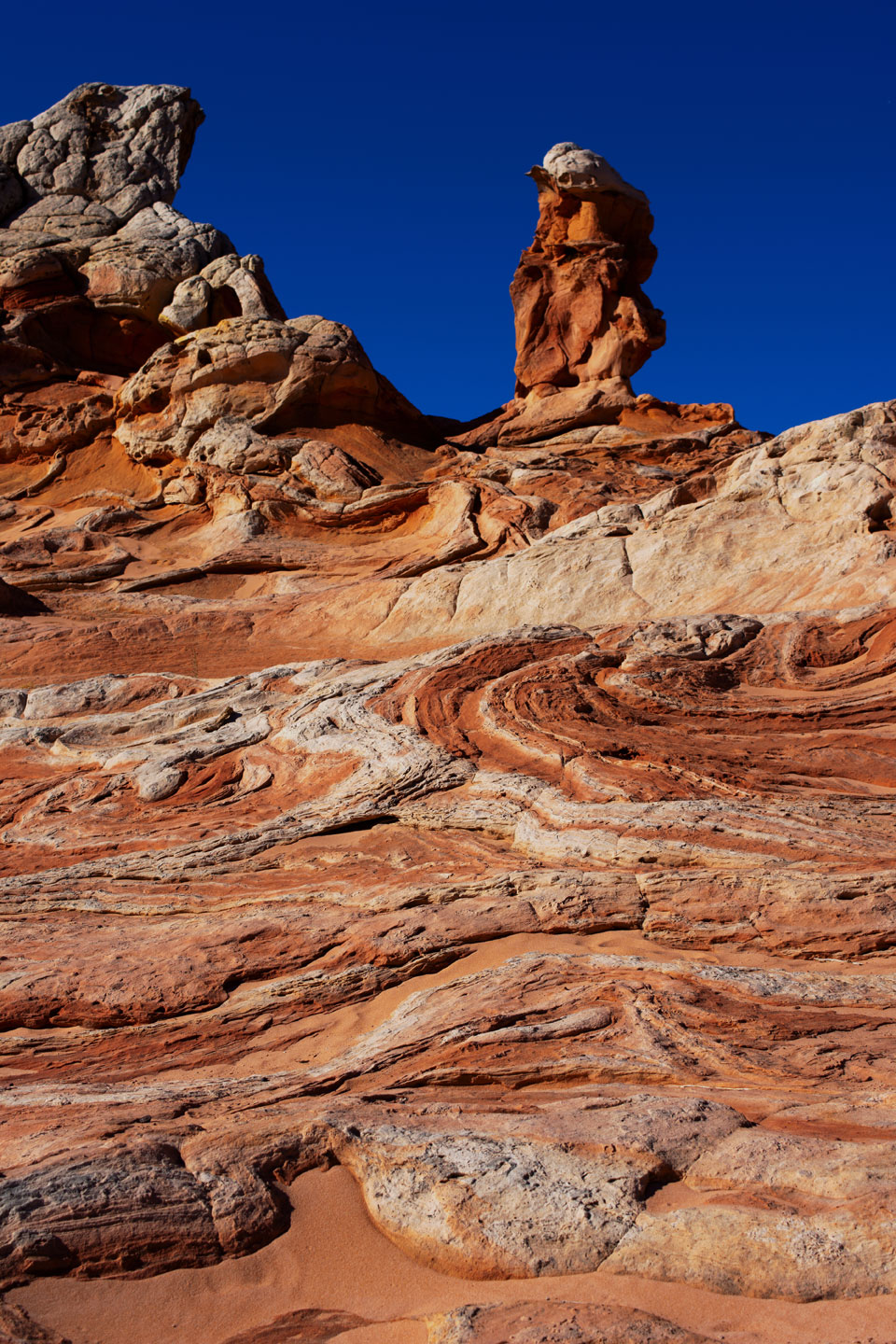 By Dave Webb
By Dave Webb
November 21, 2021
White Pocket is taffy candy, swirled, folded and blended into rock. The rock strata and banding are amazing. It is a very scenic area located in Arazona's Paria Canyon area, just south of the Utah border.
It is also just south of the famous Wave formation. White Pocket contains rock formations similar to those at The Wave, but both areas are distinctly beautiful. The Wave is located in Coyote Buttes North special use area, where permits are required to hike and only a small number of people are allowed to visit each day. Permits and limited visitation rules are also imposed at Coyote Buttes South. White Pocket is just outside these outstanding areas and no permits are required – and there is no limitation on the number of visitors per day.
At least no limitation imposed by man. Mother nature imposes natural limits because the access road is long, rough and has deep, deep sand. A high clearance 4x4 vehicle and good route finding skills are needed. There is a maze of rough dirt roads in the area in it is easy to get lost. It is also easy to get stuck, even if you are an experienced driver in a high-clearance vehicle. Stop by the BLM office in Kanab to get accurate maps and route descriptions. Some of the driving directions offered online aren't totally reliable.
https://www.blm.gov/visit/white-pocket-trailhead
https://www.thewave.info/WhitePocketCode/Map.html
Latitude: 36.956969
Longitude: -111.896803
Driving from Kanab to White Pocket took us about 3.5 hours. Driving back was a little faster because we were more confident about the roads and our equipment. Most people will want to spend about two hours exploring and taking photos. It is a long drive for just two hours, but worth it. And getting there is part of the adventure. There are also other scenic attractions nearby. It is easy to use up a full day or more exploring the area.
Primitive camping is allowed near the trailhead and along the access road. There are very nice, scenic spots nearby.
If you want to do serious photography, capturing the formations in early morning or evening light, it is best to camp in the area. You do not want to challenge the sandy roads after dark.














